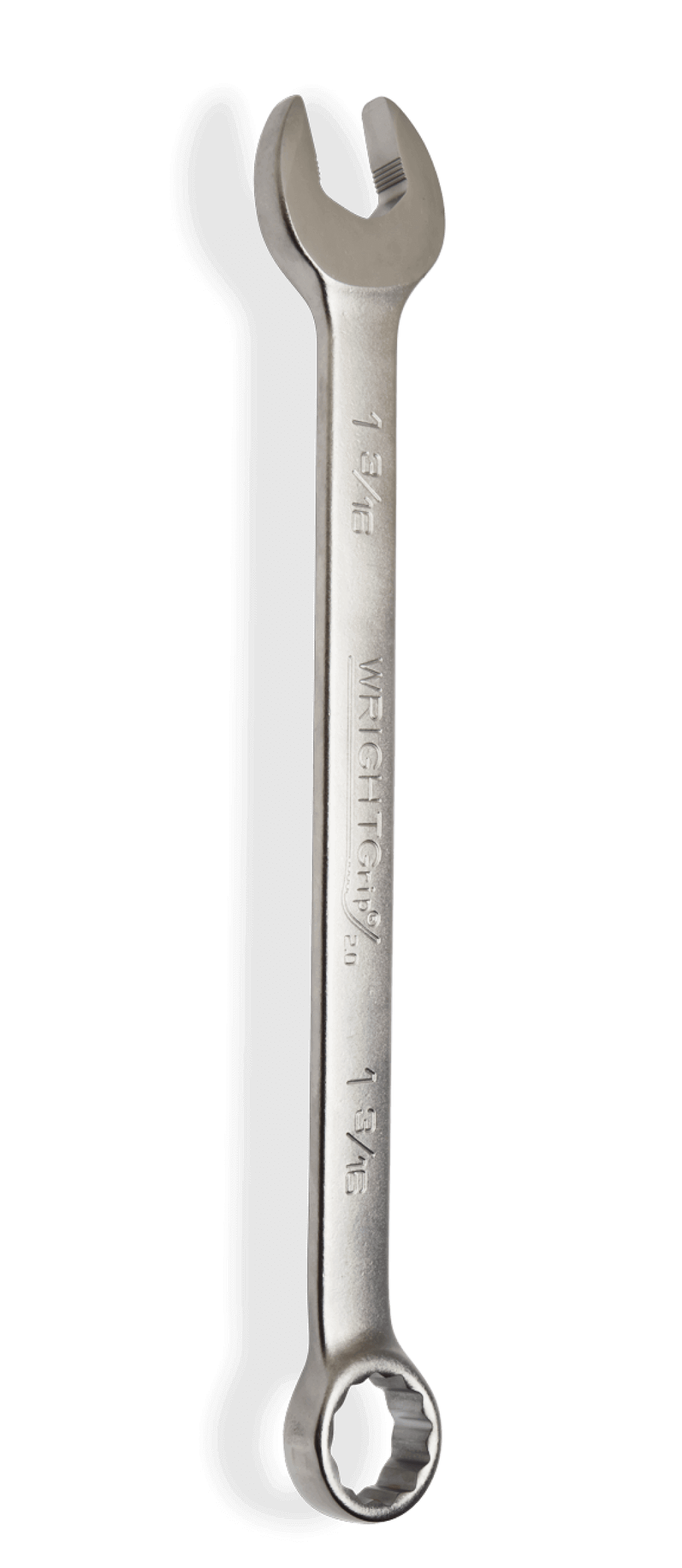February 28, 2023
Safety Based Wrench Selection
Present practice in selecting wrenches is based on experience of what works and what doesn’t. This can be learned only by experiencing failure, which may result in injury, damage to equipment or unnecessary downtime. It would seem to be a simple matter to define the strength of fasteners and to define the strength of wrenches so that the user could make an intelligent selection without risk. However, the matter turns out to be much more complicated than it appears because of the multitude of factors involved, the difficulty of defining the shape of the fasteners, and the degree of wear on the wrench.
There are over two dozen significant variables, many of which are difficult or impossible to measure and the interaction is certainly impossible to define. Some of this lack of information can be covered by a suitable safety factor, a common practice in mechanical design. But, if safety factors are too large, the recommended choices will be so large as to be impractical because current practice has been to use wrenches that are not strong enough to do a required job under all circumstances. The odds have been good enough that this has worked most of the time but has had the consequence that equipment builders have sometimes provided too little space for wrenches so that wrenches of a safe size may not fit. The user takes a chance, and the system works well, but not as well as it used to when the mechanics could use almost any wrench on any fastener that it fit. Today, we have not only variation in wrench quality, but much wider variations in fastener design and manufacturer.
Some of these fasteners require extremely high torque out of relatively small wrenches.
And caution is appropriate for the reasons described below. Factors to consider in designing or selecting a safe series of wrenches and fasteners are as follows:
Maximum Tightening Torque
This is the bolt tensile strength to yield multiplied by K-factor, appropriate for new, lubricated fasteners, the diameter and a percentage safety factor. Different values might be required for various plated finishes, or a maximum value could be used. Also, there are published torque tables for general use and specific torque values for specific applications by aircraft manufacturers and others.
Maximum Removal Torque
Most new fasteners are either plated or coated with an oil, which protects against corrosion and provides lubrication during installation. The removal torque is generally higher than installation torque by a substantial amount because of loss of lubrication, seizing, and corrosion. Typically, it will be between 100 to 200 percent of installation torque, which gives some guide for removal torque. However, values as much as 300 percent, and even higher, of installation torque are not unusual. Another approach is to provide a wrench with torsional strength exceeding that of the fastener. This also allows a user to twist off bolt heads, which is often a faster way of disassembly. The twist-off torque sets an upper limit of the useful wrench strength.
For low strength fasteners, it is quite practical to provide a wrench that is stronger than the fasteners. Wrenches that were originally designed for low-strength fasteners do not have the strength to twist off 12-point fasteners or other high-tensile fasteners because they were not designed for such loads. However, increase the strength of the wrench by increasing the diameter of the wrench may produce a wrench that is too large to work in the available space.
Minimum Torsional Strength of the Wrench
This is the other side of the wrench/fastener match. The value used for wrench strength must be based on actual conditions including both wrench and fastener tolerances and wear. The wrenching surfaces on many fasteners are made near the small end of their size range and the corners may not be sharp. These factors reduce the ability of the wrench/fastener coupling to transmit torque. When fasteners are on the small side, the amount of contact area is substantially reduced, and the load is concentrated on or near the corners of the fasteners. Because wrenches are typically much harder than fasteners, fasteners will deform under conditions of heavy loading. The amount of the deformation is very dependent on the fastener hardness. The result is that there is no such thing as a single value of the strength for a wrench. It depends very much on circumstances.
In our tests, we have seen identical wrenches with different fasteners, clearances, and hardness with ultimate strengths as low as 2500-inch pounds and as high as 6600-inch pounds.{The lower test values were from a 12-hex fastener which was used in place of a 6-hex fastener because it is a more demanding application to better test the wrench. A plain 6-hex fastener would be about 40 percent less for a grade 8 fastener.} What should we say the strength of that wrench is? Differences in clearance alone can produce 30 percent or more difference in strength. We need to think not of wrench strength, but to think in terms of the coupling of a particular wrench with a particular fastener, or the worst case that may occur under the conditions of the application.
Torques from Wrench Specifications
The ASME, SAE, and ISO standards all provide torsional test values for a wide variety of wrenches. These are proof loads for testing purposes and made to be applied only once. They do not provide for fatigue or even a few cycles of load. Also, they are made with small clearance between wrench and fastener, which is not typical of service, and with mandrels that are harder than the wrench and much harder than even high strength fasteners. The result is values which are not useful for determining working strength. On the other hand, quality wrenches do more than just meet the standard.
Conclusion
We cannot build a table of fasteners and safe wrenches for those fasteners, because we lack all the data that would need to go into this table and because of the variety of circumstances that need to be covered. It can be done for low-strength fasteners, especially those with single-hex heads because common wrenches have adequate strength in combination with these fasteners to provide adequate torque for all likely circumstances and probably enough torque to twist off the fastener, if desired. With 12- point and other hard alloy fasteners, these comfortable conditions are not attainable. So, more care must be used in the selection and use of the wrench/fastener coupling. The goal should always be to have the wrench stronger than the fastener.
One step that would help is the use of the largest possible drive size for socket wrenches. Another is to replace worn wrenches and fasteners. Replacing fasteners that have proven difficult to wrench with fasteners with more wrenchability, such as fasteners with larger heads or with spline fasteners in place of 12-point fasteners, is a possibility. There is also the option of using anti-seize compounds, although this is not always recommended because it may allow the fasteners to work loose in service and wiring of the fasteners or other locking measures may be required. Overall, experience and judgment are needed in the design, selection, and application of fasteners and the wrenches that are required to install and to remove them.






